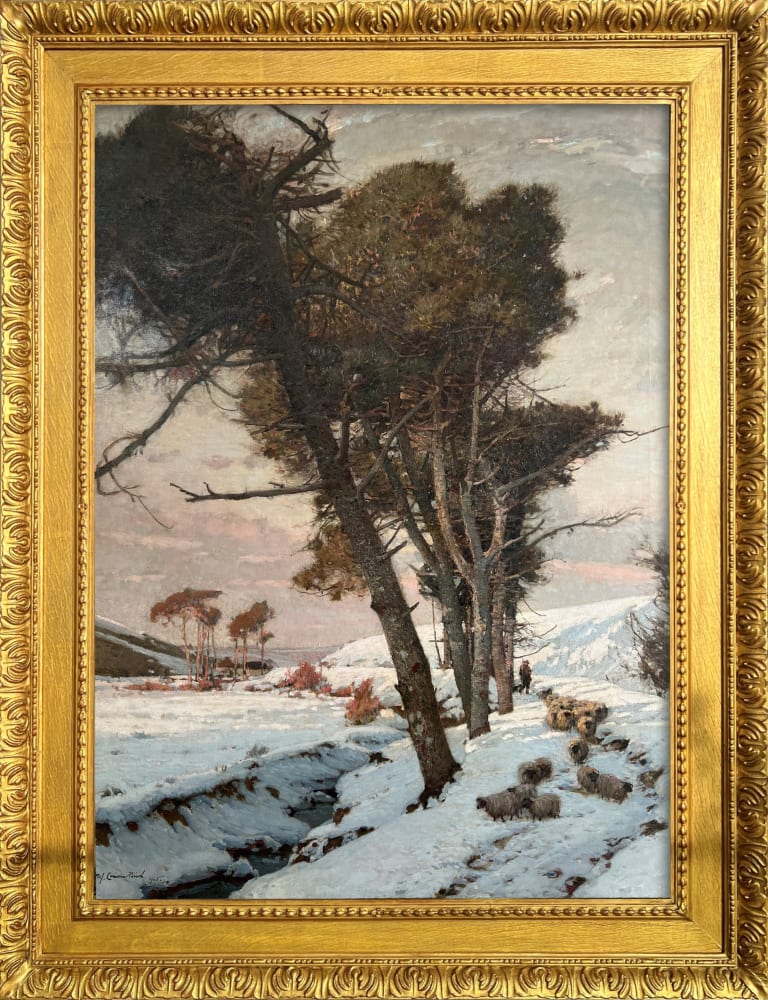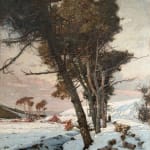Lamorna Birch 1869-1955
Framed: 124.4 x 99cm (49 x 39 ins.).
Provenance
USA collector, and thence by descentIn 1902 an unusually heavy snowfall drew Birch out early from Flagstaff Cottage at Lamorna, hauling a 52 x 30 inch canvas across frozen meadows. He painted a scene of snow melting in golden sunlight – ultimately titled The Last Long Streaks of Snow. This was the first of Birch's snow scenes and was accepted by the Royal Academy for their summer exhibition.
Encouraged by his RA success Birch invested in the subject and genre of work; a decision that proved highly productive. In the winter of 1905 Birch commenced a series of paintings of a snow covered Roseworthy Valley, which is just north of Camborne in mid-Cornwall. Apart from our painting, Winter’s Path, Roseworthy Valley, Camborne, the other works of this series are now held in public collections: December painted in 1905 and purchased that year for the Manchester Art Gallery from the Royal Academy exhibition, Winter also painted in 1905 and purchased in 1924 by the Derby Museum and Art Gallery, Winter, Roseworthy Valley, Camborne, 1905, purchased from Stanhope Forbes for what is now The Box in Plymouth, and Lingering Snows, 1906, now in the Brighton & Hove Museums.
With all other such works in public collections we were thrilled in 2024 to discover the present work in a private estate collection in Alabama, USA and have great pleasure in offering this wonderful Lamorna Birch for sale. Dissected diagonally by the wind-battered trees, the work has a powerful composition with the path and shepherded flock to one side, and the distant trees and serpentine melt-water brook to the other. The colourist in Birch and his admiration for the French Impressionists (Birch studied in Paris in 1895/96 and much admired Monet, Sisley, Pissarro and Courbet) and colour theory, is much in evidence with the peachy pink tones in the sky and pale blue shadows in the snow.







